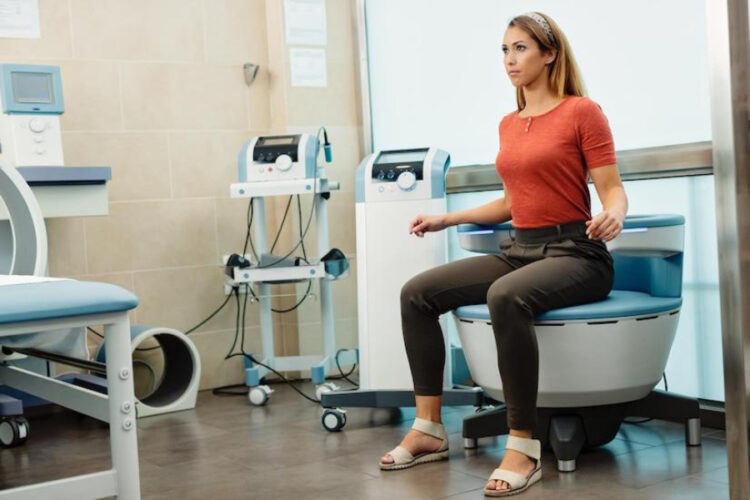Experience the transformative power of Axonics Therapy, a groundbreaking solution for incontinence. This cutting-edge treatment is redefining bladder control care, empowering individuals to regain confidence and independence. Join us to explore how Axonics Therapy is setting new standards in incontinence management and improving lives. The future of treatment is here.
Understanding Incontinence And Its Impact
Incontinence, the involuntary loss of bladder control, affects millions worldwide, impacting daily life, emotional well-being, and social interactions. It can take various forms, including stress, urge, and overflow incontinence, each presenting unique challenges. Beyond physical discomfort, incontinence often leads to anxiety, social withdrawal, and a diminished sense of self-worth.
The stigma surrounding incontinence prevents many from seeking help, leaving them to manage the condition in silence. Raising awareness and fostering open conversations are essential to breaking this cycle. Effective treatments like Axonics Therapy offer hope, empowering individuals to regain confidence and improve their quality of life.
Traditional Treatments For Incontinence
Traditionally, incontinence management has included lifestyle changes, pelvic floor exercises, medications, and surgery. Dietary adjustments and fluid management offer some relief, while Kegel exercises strengthen bladder-supporting muscles.
Medications like anticholinergics help control bladder spasms but often cause side effects, leading to poor adherence. Surgical options, such as sling procedures or bladder augmentation, can be effective but carry risks and lengthy recovery periods.
Axonics Therapy presents a promising alternative—an advanced, minimally invasive solution that redefines incontinence care, offering improved outcomes with fewer complications.
How Axonics Therapy Works
Axonics Therapy offers a minimally invasive solution for incontinence by stimulating the sacral nerves responsible for bladder control. According to Northwest Continence Center (https://nwcontinence.com/). This advanced treatment involves implanting a small device, similar to a pacemaker, that sends electrical impulses to regulate bladder activity.
The procedure includes a trial phase, where a temporary device assesses effectiveness before a permanent implant is placed. This two-step approach ensures confidence in the treatment’s success.
Designed with patient-friendly, adjustable settings, Axonics Therapy provides a personalized, research-backed solution that enhances the quality of life for those struggling with incontinence.
Benefits Of Axonics Therapy
Axonics Therapy offers more than just symptom relief—it restores confidence, independence, and a sense of normalcy for those affected by incontinence. Patients can engage in social activities without fear, significantly improving their quality of life.
A key advantage of Axonics Therapy is its long-lasting effects. Unlike medications or frequent interventions, this innovative treatment provides sustained symptom control, with the device lasting several years.
Its minimally invasive approach also ensures a quicker recovery with fewer complications, allowing individuals to resume daily routines swiftly and enjoy a more predictable, worry-free lifestyle.
Comparison With Other Incontinence Treatments
Axonics Therapy stands out among incontinence treatments by addressing the root cause rather than just managing symptoms. Traditional options like medications and lifestyle changes may provide temporary relief but often require ongoing adjustments and come with side effects.
Surgical procedures, while effective for some, involve longer recovery times and potential risks. In contrast, Axonics Therapy offers a minimally invasive, long-lasting solution that targets nerve pathways for sustained symptom relief.
A key advantage is the trial phase, allowing patients to evaluate effectiveness before committing to a permanent implant—an option not typically available with surgical interventions.
Axonics Therapy Accessibility And Availability
Axonics Therapy is becoming increasingly accessible as more healthcare facilities adopt this innovative treatment. With a growing number of trained professionals, patients now have greater access to this effective solution for incontinence.
Its minimally invasive nature allows for quick implementation in outpatient settings, making it particularly beneficial for individuals in rural or underserved areas. As the network of providers expands, more people can experience the life-changing benefits of this therapy.
Consulting a healthcare provider is essential to determine suitability. Continued education and outreach efforts will ensure more individuals are informed and receive the care they need.
Looking Ahead: The Future Of Incontinence Treatment
As we look to the future of incontinence treatment, it is clear that innovations like Axonics Therapy are paving the way for more effective and empowering solutions. Ongoing research and development in the field of neuromodulation continue to expand our understanding of bladder function and offer exciting possibilities for new therapies. In the coming years, we can expect further advancements that may enhance the effectiveness and accessibility of treatments for incontinence.
Additionally, the integration of technology into healthcare is likely to play a pivotal role in shaping the future of incontinence management. Wearable devices, telehealth consultations, and mobile health applications are just a few examples of how technology can empower patients and improve their treatment experience. By leveraging these tools, individuals can monitor their symptoms, engage in self-management, and maintain open lines of communication with healthcare providers.
Ultimately, the future of incontinence treatment is bright, and Axonics Therapy stands at the forefront of this evolution. By focusing on patient-centered care and innovative solutions, we can help individuals reclaim their lives and achieve the freedom and confidence they deserve. The journey toward better bladder health is ongoing, and with continued advancements, we can anticipate a world where incontinence is no longer a barrier to living fully and joyfully.

